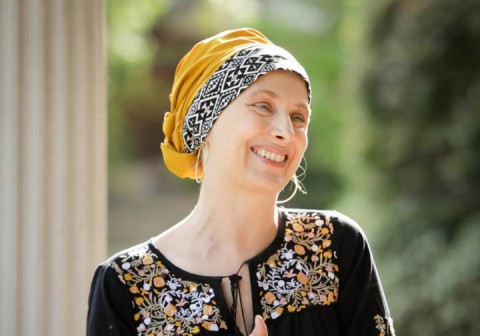
Anya Krugovoy Silver’s death, when I heard about it yesterday, knocked the breath out of me. Not because I didn’t know she was ill. She was often called the “breast cancer poet,” although she disliked that title. When I talked with her at the Festival of Faith and Writing in April, she seemed frail. But she lived so vivaciously that it was easy to forget how sick she was. She reminded me of her illness a few weeks ago when, during an email conversation about identity markers and diversity, she joked, “I always think of myself as ‘middle aged white woman—but there’s cancer!’”
I laughed out loud at her joke. It’s not that I’m insensitive to how painful cancer is for people afflicted with it and those who love them. I laughed because it was so thoroughly typical of Anya to say something like that. Her cancer was never her primary identity marker: it was always a but. I am a full human being, but I happen to have cancer. In a June interview, she put it this way: “I am not my disease. I am a complete person with a complete life. Having cancer doesn’t make one incapable of joy and wonder, and it doesn’t preclude loving food, wanting to have sex, worshipping God, and parenting children.”
Yet, many of her recent poems contain imagery related to cancer and its treatment: the way it ravages a body, the relief that a simple gesture or a grape popsicle can bring, the pain of surviving a loved one’s death, the funniest and most tragic things her friends with cancer have said to her. In all of it, Anya’s faith—which was wrapped up with deep, honest questioning of God—is the underlying pulse. “I agree with theologians who believe that God has a lot to answer for, but I also believe that human beings have a lot to answer for,” she said in the same interview.




